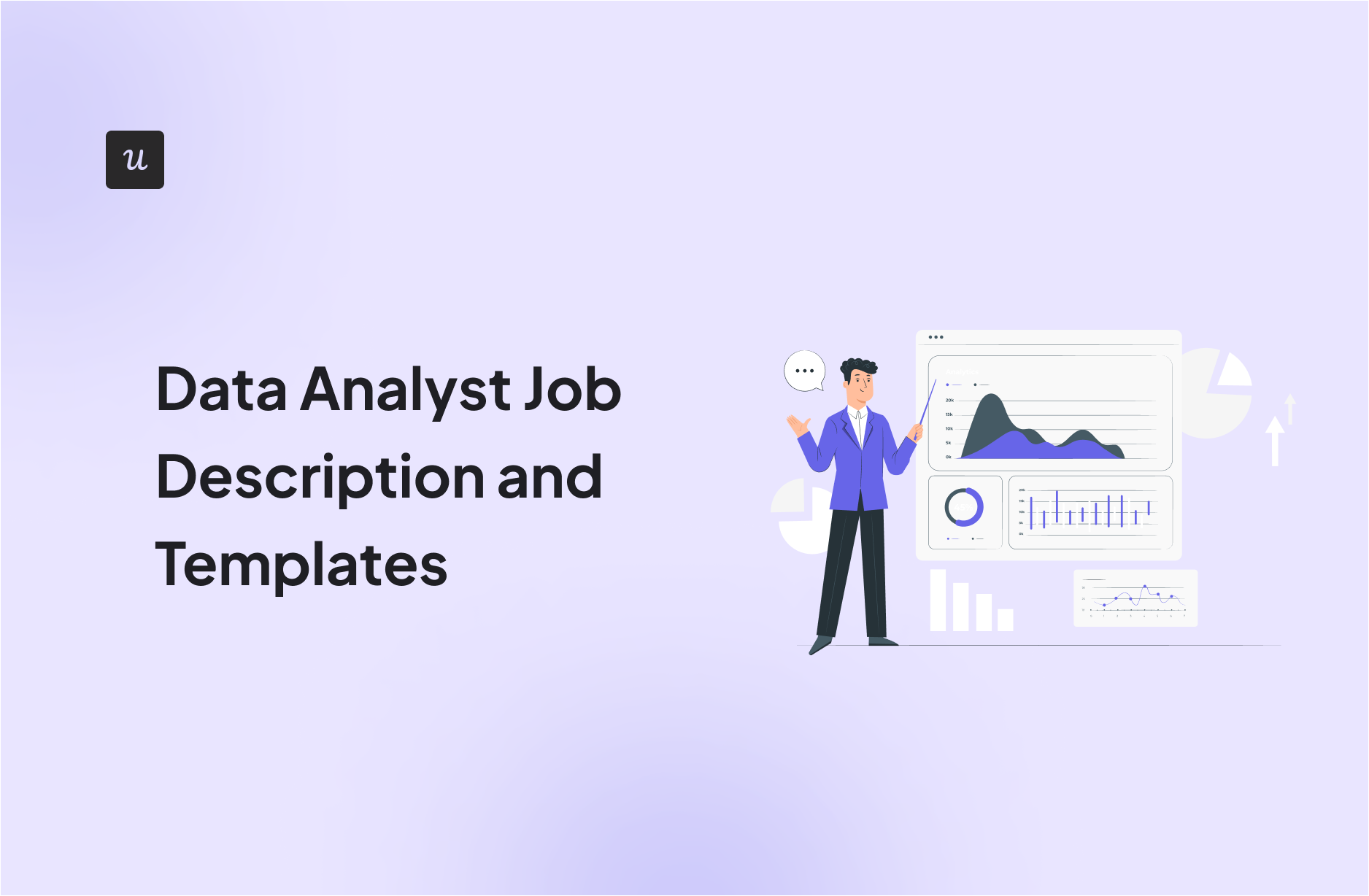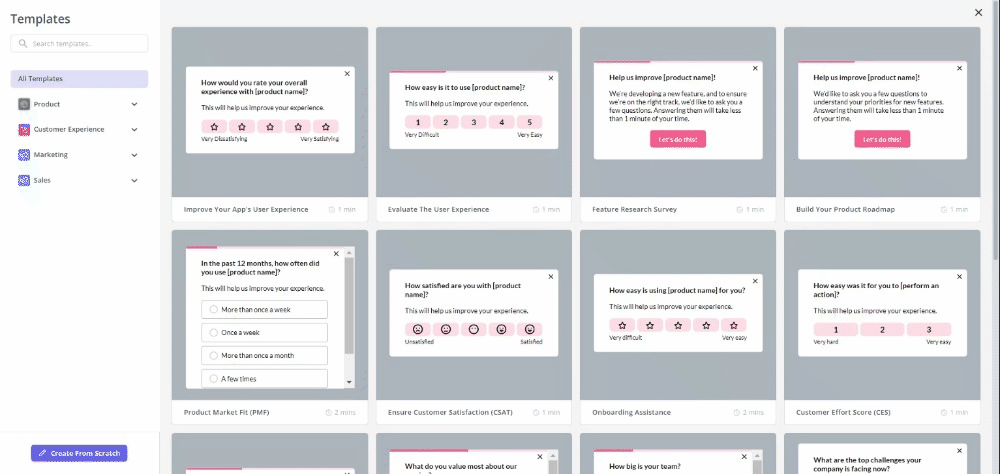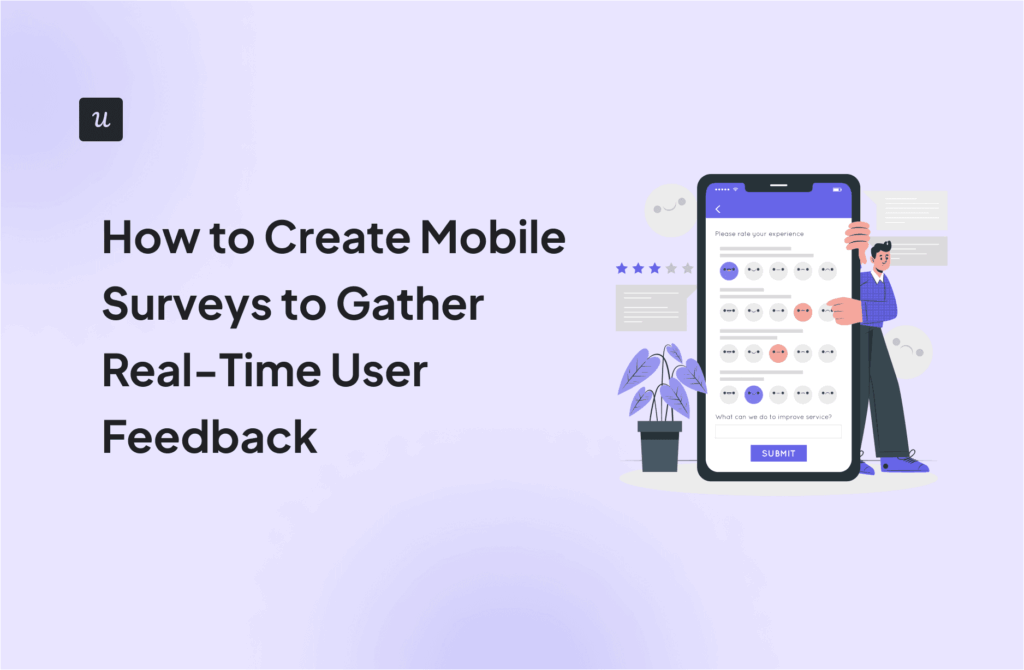
Try Userpilot Now
See Why 1,000+ Teams Choose Userpilot

Data analyst job description in short
- A data analyst is a problem-solver who uses their technical skills to uncover valuable insights from data. They act as translators, transforming raw data sets into clear and actionable information that businesses can use to make better decisions.
- A data analyst job description outlines the key responsibilities, must-have skills, and qualifications needed to extract valuable insights from product and customer data, informing strategic decisions that drive growth and improve the user experience.
- It can also include preferred skills, experience, and certifications. The specific requirements for this role will vary depending on the company size, product complexity, and the focus of data analysis.
- For instance, a data analyst at a company focused on customer support might prioritize analyzing customer feedback and support ticket data to identify areas for improvement in service delivery.
- In contrast, a data analyst at a company developing marketing automation software might focus on analyzing campaign performance and user engagement data to optimize marketing strategies.
- Looking into tools for data analysts? Userpilot is an all-in-one product platform with engagement features and powerful analytics capabilities. Book a demo to see it in action!
What is a data analyst?
A data analyst is a problem-solver who uses their technical skills to uncover valuable insights from data. They act as translators, transforming raw data sets into clear and actionable information that businesses can use to make better decisions.
Data analyst’s main responsibilities
Here’s a breakdown of a data analyst’s main responsibilities and duties:
- Data collection and cleaning: Gather data from various sources (databases, spreadsheets, APIs, etc.), assess its quality, and clean it by addressing inconsistencies, errors, and missing values.
- Data analysis and interpretation: Apply statistical techniques and tools to analyze data, identify patterns, trends, and correlations, and derive meaningful insights that address business questions or problems.
- Data visualization: Create clear and impactful visualizations (charts, graphs, dashboards) to communicate data findings effectively to both technical and non-technical stakeholders.
- Reporting and presentation: Prepare comprehensive reports and presentations that summarize data analysis results, highlight key findings, and offer actionable recommendations based on data-driven insights.
However, with the rise of cloud storage and machine learning trends, you may need to handle tasks specific to certain tools, such as:
- Apply machine learning algorithms to develop predictive models, automate data analysis tasks, and gain deeper insights from complex datasets.
- Work with big data technologies (Hadoop, Spark) to process and analyze massive volumes of data.
- Utilize cloud-based data platforms (AWS, Azure, Google Cloud) for scalable data storage, processing, and analysis.
Data analyst job description and template
To better understand the daily tasks and job requirements of a data analyst, here’s a job description example for your reference:
Job Title: Data Analyst (Specify Level: Junior, Mid-Level, Senior)
Department: (e.g., Business Analytics, Data Science, Marketing Analytics)
Reports To: (e.g., Director of Analytics, Head of Data Science)
Summary/Objective:
We’re seeking a highly analytical Data Analyst to transform raw data into actionable insights that drive strategic decision-making. You will be responsible for collecting, cleaning, analyzing, and visualizing complex datasets, identifying trends and patterns, and communicating your findings to both technical and non-technical stakeholders.
Responsibilities
- Gather data from various sources, ensuring accuracy and completeness. Cleanse and preprocess data to prepare it for analysis.
- Apply statistical techniques and tools to analyze complex datasets, identifying trends, patterns, and correlations.
- Create compelling reports, dashboards, and presentations that effectively communicate findings to stakeholders.
- Translate data analysis results into actionable insights and recommendations that inform business decisions.
- Partner with cross-functional teams to understand business needs, gather requirements, and deliver data-driven solutions.
Qualifications:
- Education & Experience:
- Bachelor’s degree in Mathematics, Statistics, Computer Science, or a related field.
- (Specify years of experience based on level: 1-2 years for Junior, 3-5 for Mid-Level, 5+ for Senior).
- Proficiency in SQL for data extraction and manipulation.
- Strong knowledge of statistical programming languages (R, Python).
- Experience with data visualization tools (Tableau, Power BI).
- Familiarity with data warehousing and ETL processes is a plus.
- Technical Skills:
- Proficiency in statistical analysis techniques (regression, hypothesis testing, etc.).
- Knowledge of machine learning algorithms is a plus (for Mid-Level and Senior).
- Experience working with cloud platforms (AWS, Azure, GCP) is desirable.
Benefits
- Competitive Salary: We offer a competitive salary commensurate with experience and qualifications.
- Comprehensive Benefits: Our benefits package includes health insurance, dental insurance, vision insurance, retirement savings plan, paid time off, and more.
- Professional Development: We invest in our employees’ growth by providing opportunities for training, conferences, and mentorship.
- Collaborative Culture: Join a team of passionate data professionals who are committed to making a difference.
To Apply
Please submit your resume, cover letter, and a portfolio of relevant data analysis projects (if applicable). In your cover letter, please highlight your most relevant skills and experiences and explain why you are interested in joining our team.
Best practices to be a great data analyst
Data analysis is a multi-stage process, with each step contributing to the overall quality of the insights. With that in mind, we’ve outlined several best practices to make your job easier along the way:
- Define clear objectives: Every analysis should have a goal. What questions are you trying to answer? What decisions will the insights inform? Having a clear target keeps your analysis focused and avoids getting lost in the data
- Understand the business context: Don’t analyze data in a vacuum. Learn the industry, the company’s goals, and how your analysis fits in. Talk to stakeholders to understand their needs.
- Embrace iteration: Data analysis is rarely a linear process. Be prepared to revisit your approach, refine your questions, and try different techniques as you gain insights.
- Document everything: Keep thorough records of your data sources, cleaning steps, analysis methods, and findings. This ensures transparency and reproducibility.
- Automate when possible: To save time and reduce errors, repetitive tasks can be automated with scripts (Python, R).
- Choose the right tools for the job: There are many data analysis tools – both code (i.e. Amplitude, Heap, etc.) and no code options (i.e. Userpilot), but you can choose the one that best suits the task. For example, you can use Userpilot to visualize data and generate actionable insights leveraging reports such as funnel, path, etc.
- Focus on actionable insights: Don’t just present numbers, but tell a story with your data. Translate your findings into clear recommendations for action.
- Communicate effectively: Tailor your communication to your audience. Use simple language, visualizations, and narratives to make your findings accessible to everyone. This is where no-code options like Userpilot become useful when it works for both technical and non-technical teams.
Data analyst FAQs
Is a data analyst an IT job?
Data analysis is often considered a hybrid role that bridges the gap between IT and business. While data analysts use technical skills and tools (like SQL, Python, and various data visualization platforms) to work with data, their primary focus is on extracting insights that can be used to inform business decisions.
What is a data analyst’s job description?
A data analyst’s job revolves around transforming raw data into actionable insights that drive business decisions. They collect, clean, and organize data from various sources, then utilize statistical techniques and tools to analyze it. Their work is essential for understanding customer behavior, optimizing business operations, and identifying new growth opportunities.
What do you need to become a data analyst?
Here’s a general roadmap that can give you an idea of how to become a data analyst:
- Develop foundational skills: Gain proficiency in mathematics, statistics, and computer science.
- Learn essential tools and technologies: Master programming languages like SQL, Python, or R, and data visualization tools like Tableau or Power BI.
- Gain practical experience: Work on real-world projects, internships, or freelance gigs to build your portfolio.
- Earn a degree or certification: Consider a bachelor’s degree in a relevant field or pursue industry-recognized certifications (e.g., Google Data Analytics, Microsoft Azure Data Scientist Associate).
- Network and build relationships: Connect with other data professionals through online communities, conferences, and job fairs.
- Apply for entry-level positions: Look for junior data analyst, data analyst intern, or business analyst roles to gain experience.
Is a data analyst a good career?
Yes, data analysis is a promising career choice for many. With the ever-increasing reliance on data across industries, the demand for skilled data analysts is high and projected to grow steadily in the coming years. This translates to competitive salaries and abundant job opportunities. Plus, data analysis offers a versatile skillset applicable across diverse sectors, providing flexibility and potential for career advancement.
Conclusion
We hope this guide has provided you with valuable insights into the roles and responsibilities of data analysts.
By understanding the key responsibilities and skills required, you can make informed decisions and take meaningful steps in your career or recruitment journey.
Looking into tools for data analysts? Userpilot is an all-in-one product platform with engagement features and powerful analytics capabilities. Book a demo to see it in action!








